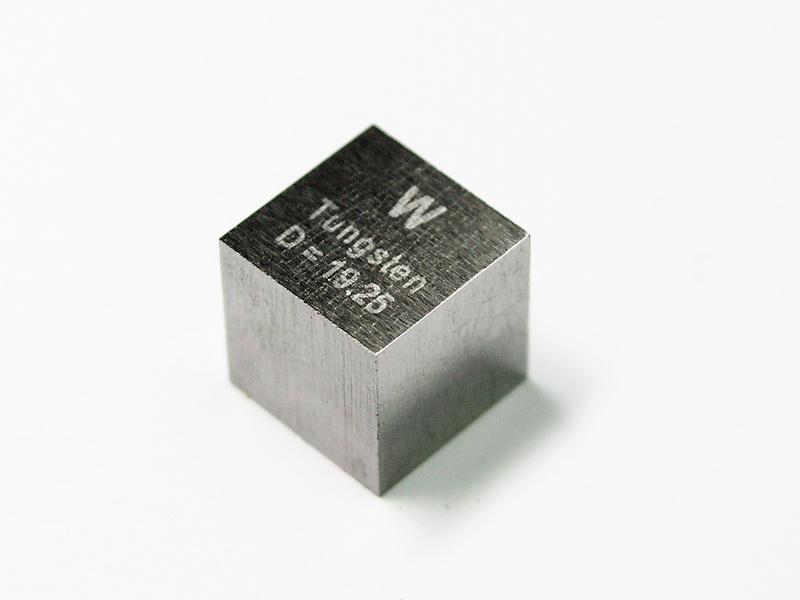Tungsten has a density of 19.3 grams per cubic centimeter. It is one of the densest metals on Earth.
Tungsten, also known as wolfram, ranks as one of the densest naturally occurring elements. This dense metal boasts a unique combination of properties, making it invaluable in various industries. Tungsten’s high melting point and exceptional hardness contribute to its widespread use in heavy-duty applications.
Its density surpasses many other metals, including lead and gold. Tungsten’s remarkable properties ensure its role in manufacturing, electronics, and even medical technology. The aerospace industry also relies heavily on tungsten for its durability and weight. As a result, its unique characteristics make tungsten an irreplaceable material in numerous critical applications.

Credit: www.smart-elements.com
Introduction To Tungsten
Tungsten is a fascinating metal known for its high density. It is widely used in various industries. But what makes it so unique? Let’s dive into the properties and history of this incredible element.
What Is Tungsten?
Tungsten, also known as wolfram, is a chemical element with the symbol W. It has an atomic number of 74. Tungsten is remarkable for its high melting point. It melts at 3422°C (6192°F), which is the highest of all metals.
This metal is also very dense. Its density is approximately 19.25 grams per cubic centimeter. This is almost as dense as gold. Tungsten is hard and resistant to wear and corrosion. These properties make it valuable in many applications.
Historical Background
Tungsten’s history dates back to the 18th century. Two Spanish chemists, Juan José and Fausto Elhuyar, discovered it in 1783. They isolated tungsten from the mineral wolframite.
The name “tungsten” comes from Swedish words meaning “heavy stone.” The element’s symbol, W, comes from its German name, “wolfram.” The discovery of tungsten opened up new possibilities in metallurgy and industry.
Tungsten quickly became essential for making strong, durable tools. Its high melting point made it ideal for high-temperature applications. Over the years, tungsten has remained a critical material in many fields.

Credit: tungsten.edfagan.com
Physical Properties
Tungsten is one of the densest metals known to humans. Its unique physical properties make it invaluable in many industries. Understanding these properties is key to appreciating its uses.
Atomic Structure
Tungsten has an atomic number of 74. This means it has 74 protons in its nucleus. The atomic weight of tungsten is 183.84 u. This heavy atomic weight contributes to its density. Tungsten atoms are closely packed in a body-centered cubic structure.
Density Comparison
The density of tungsten is 19.25 grams per cubic centimeter. To put this in perspective, let’s compare it with other materials:
| Material | Density (g/cm3) |
|---|---|
| Lead | 11.34 |
| Gold | 19.32 |
| Iron | 7.87 |
| Osmium | 22.59 |
Tungsten is denser than lead and iron. It is almost as dense as gold. Osmium is one of the few metals denser than tungsten.
The high density of tungsten makes it ideal for applications requiring weight and strength. For example, it is used in aerospace and military industries.
Measuring Tungsten’s Density
Understanding how dense tungsten is helps in various fields. Tungsten’s density is one of its most important properties. This section explores methods and challenges in measuring tungsten’s density.
Methods Used
Several methods help measure tungsten’s density. Common methods include:
- Hydrostatic Weighing: Uses water displacement to measure density.
- Archimedes’ Principle: Involves submerging tungsten in a liquid.
- Pycnometer Method: Uses a pycnometer to measure liquid displacement.
Each method provides accurate results. Scientists choose the method based on available tools.
Challenges In Measurement
Measuring tungsten’s density presents some challenges. These include:
- High Density: Tungsten’s density is very high. This makes precise measurement harder.
- Purity Levels: Impurities in tungsten affect density measurements.
- Equipment Sensitivity: Sensitive tools are needed to measure small changes.
Overcoming these challenges requires advanced tools and techniques. Proper calibration and environment control are also essential.
Applications Of Tungsten
Tungsten is a dense metal with many uses. Its high density and strength make it valuable. Let’s explore some key applications of tungsten.
Industrial Uses
Tungsten is essential in many industries. It is used to make cutting tools. These tools can cut through very hard materials. Tungsten is also used in mining. It makes drilling equipment stronger. The metal’s high melting point is useful too. This means it can withstand extreme heat. So, it’s used in furnaces and jet engines.
Tungsten is also used in the electronics industry. It is a good conductor of electricity. This makes it ideal for electrical contacts. Tungsten is also used in light bulbs. Its high melting point allows it to work well in them.
Scientific Research
Tungsten has applications in scientific research. It is used in radiation shielding. Tungsten is very dense. It can block harmful radiation effectively. This makes it useful in medical and nuclear research.
Tungsten is also used in particle physics. Scientists use it in detectors. These detectors help study tiny particles. Tungsten’s high density makes it ideal for this job. It helps gather accurate data.

Credit: www.reddit.com
Frequently Asked Questions
What Is The Density Of Tungsten?
Tungsten has a density of 19. 25 grams per cubic centimeter.
Why Is Tungsten So Dense?
Tungsten’s density is due to its tightly packed atomic structure.
How Does Tungsten’s Density Compare To Lead?
Tungsten is about 1. 7 times denser than lead.
Is Tungsten The Densest Metal?
No, osmium and iridium are denser than tungsten.
What Are Common Uses Of Tungsten?
Tungsten is used in light bulb filaments, cutting tools, and military applications.
How Is Tungsten Density Measured?
Tungsten density is measured using mass and volume calculations.
Conclusion
Tungsten’s density makes it unique and valuable. Its high density offers numerous industrial applications. Understanding its properties can guide material choices. With its impressive characteristics, tungsten remains essential in many fields. Explore more about tungsten and its uses to harness its full potential.

Rakib Sarwar is a seasoned professional blogger, writer, and digital marketer with over 12 years of experience in freelance writing and niche website development on Upwork. In addition to his expertise in content creation and online marketing, Rakib is a registered pharmacist. Currently, he works in the IT Division of Sonali Bank PLC, where he combines his diverse skill set to excel in his career.
